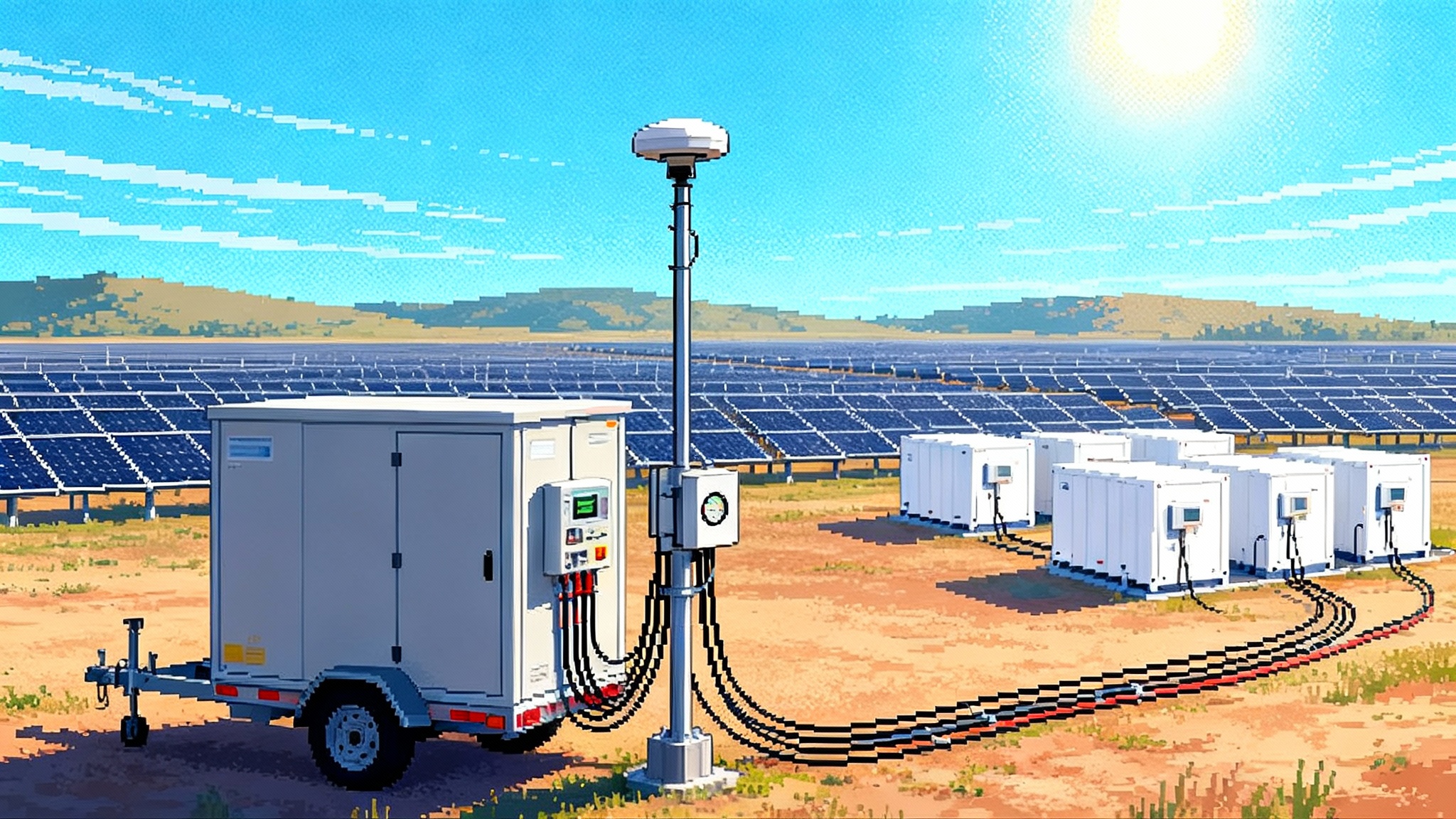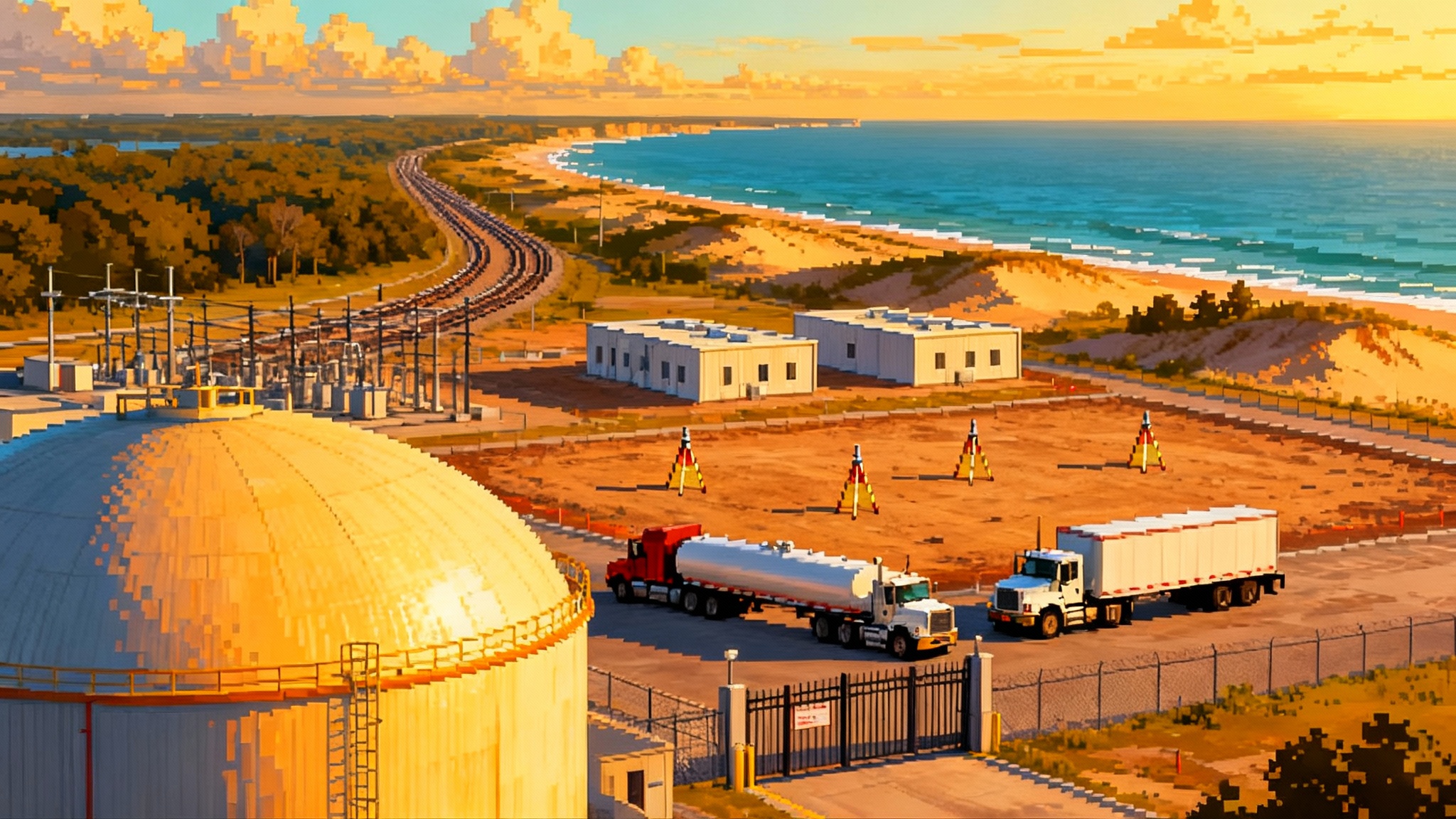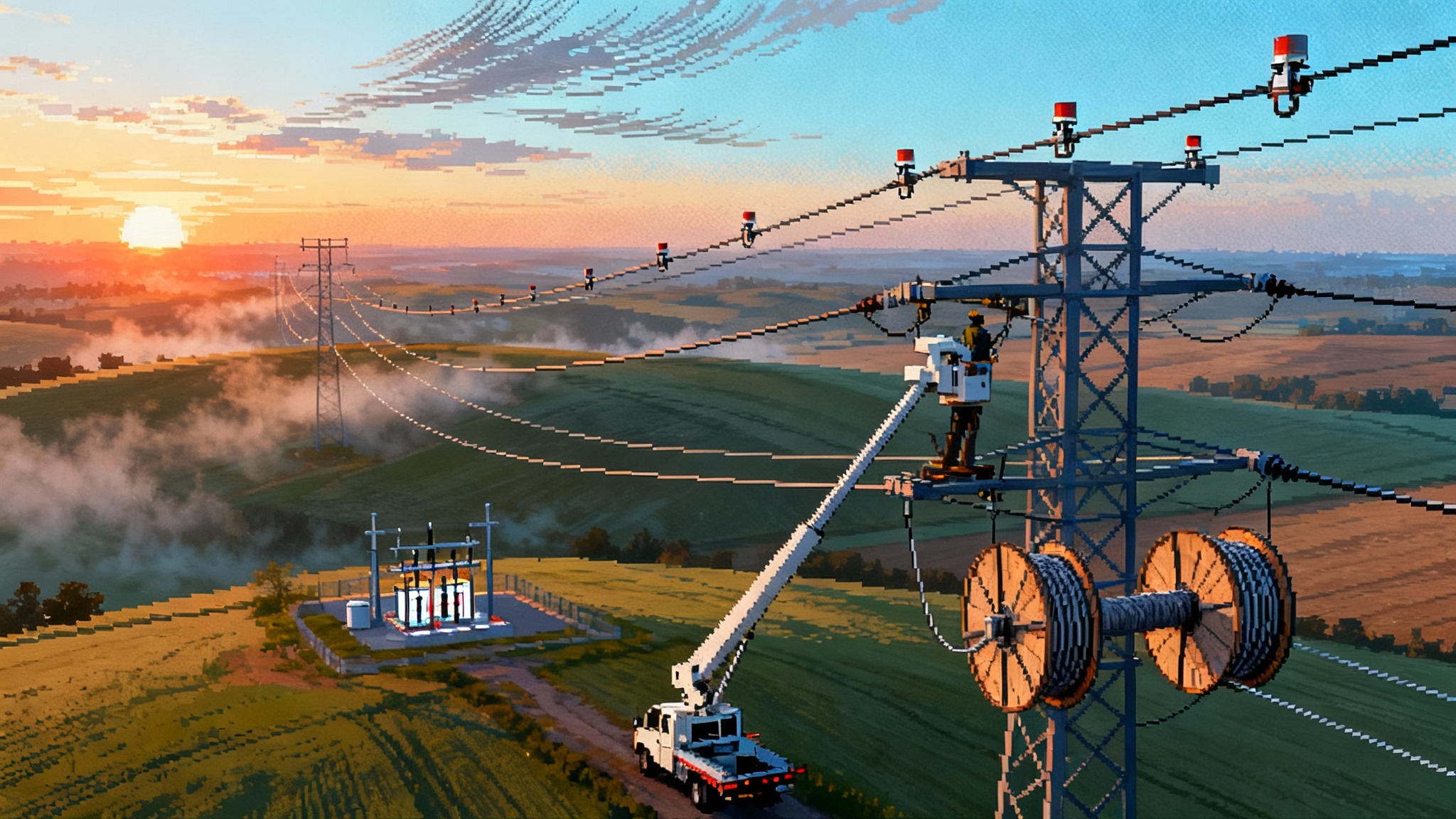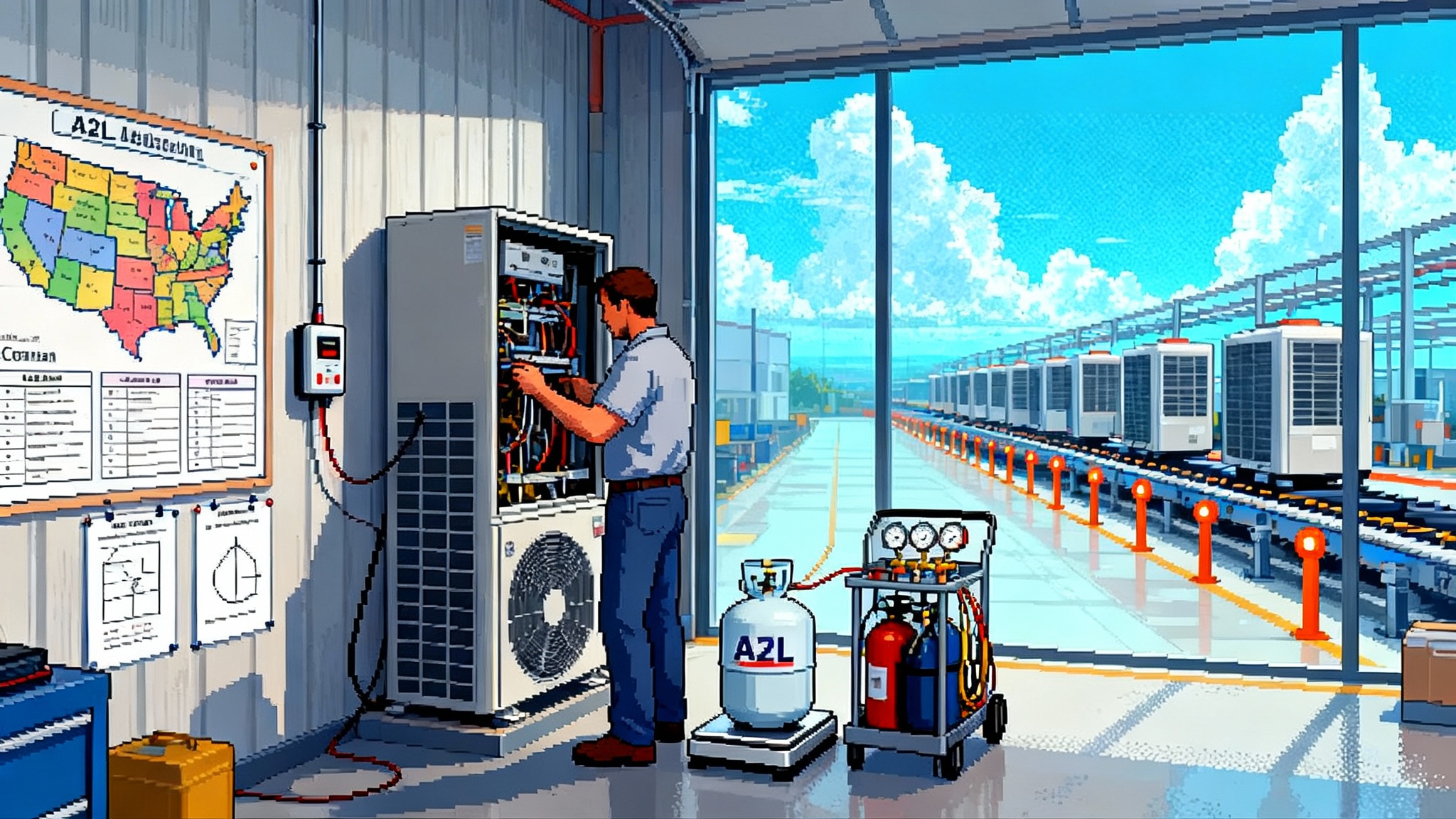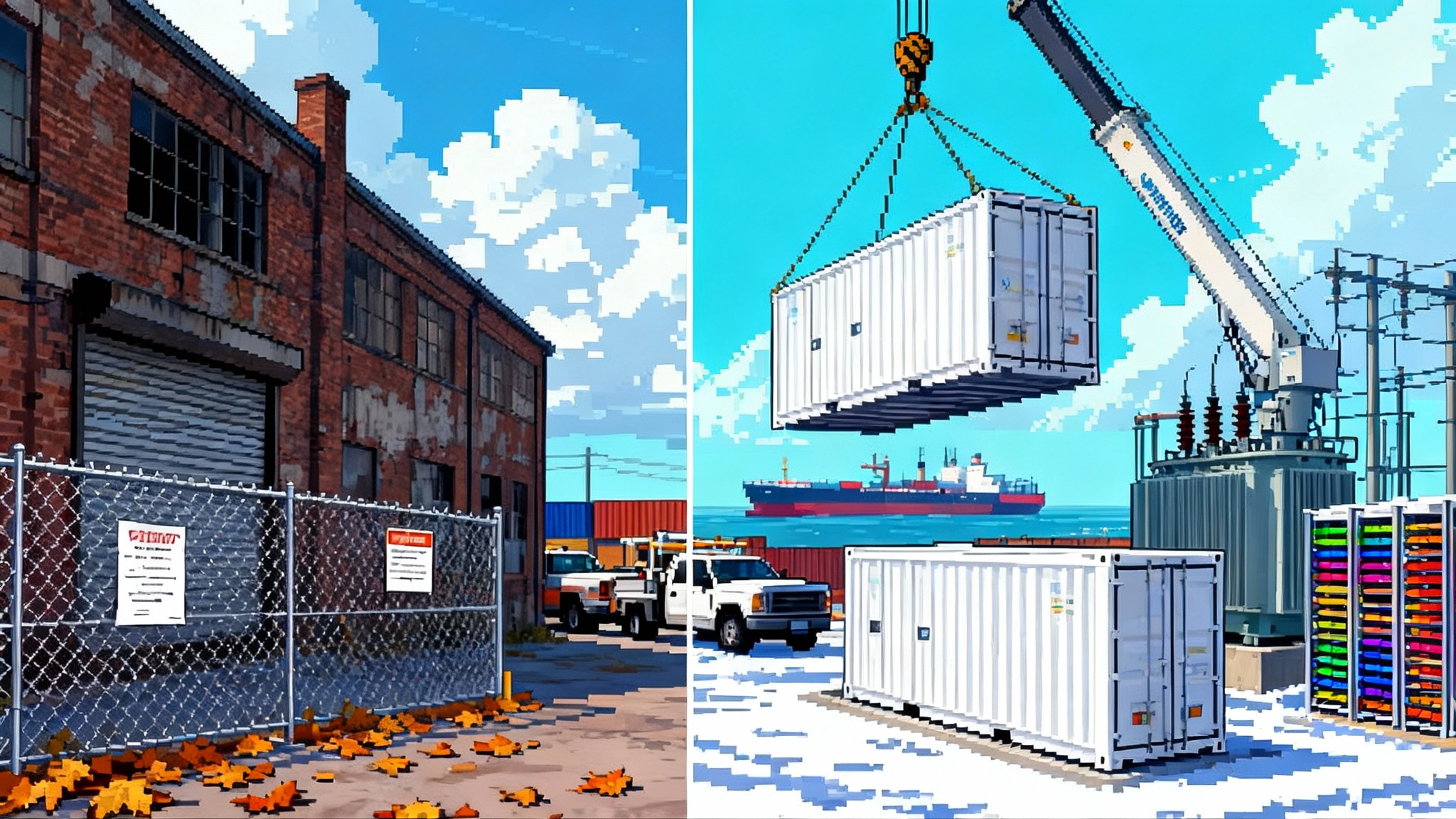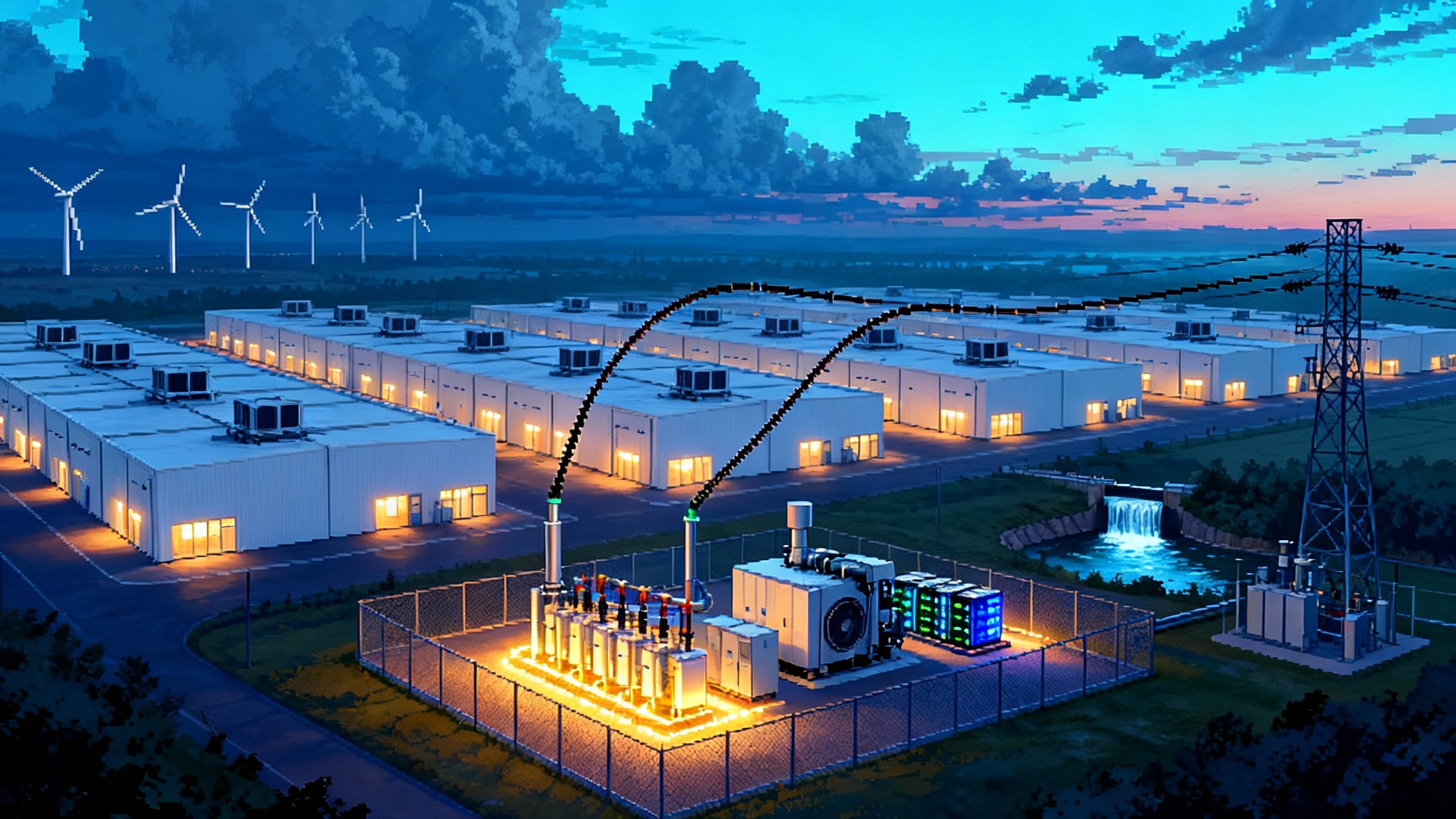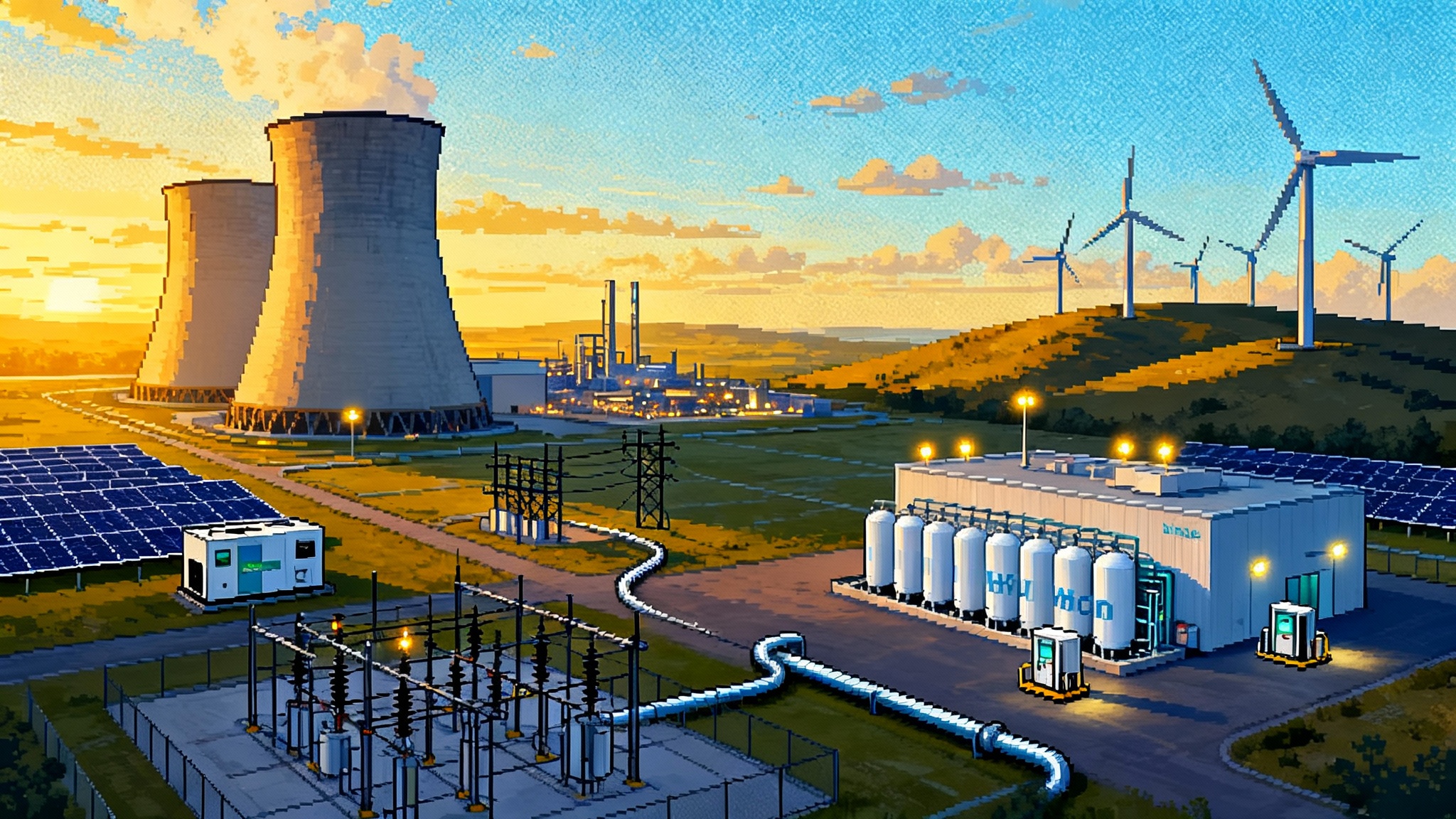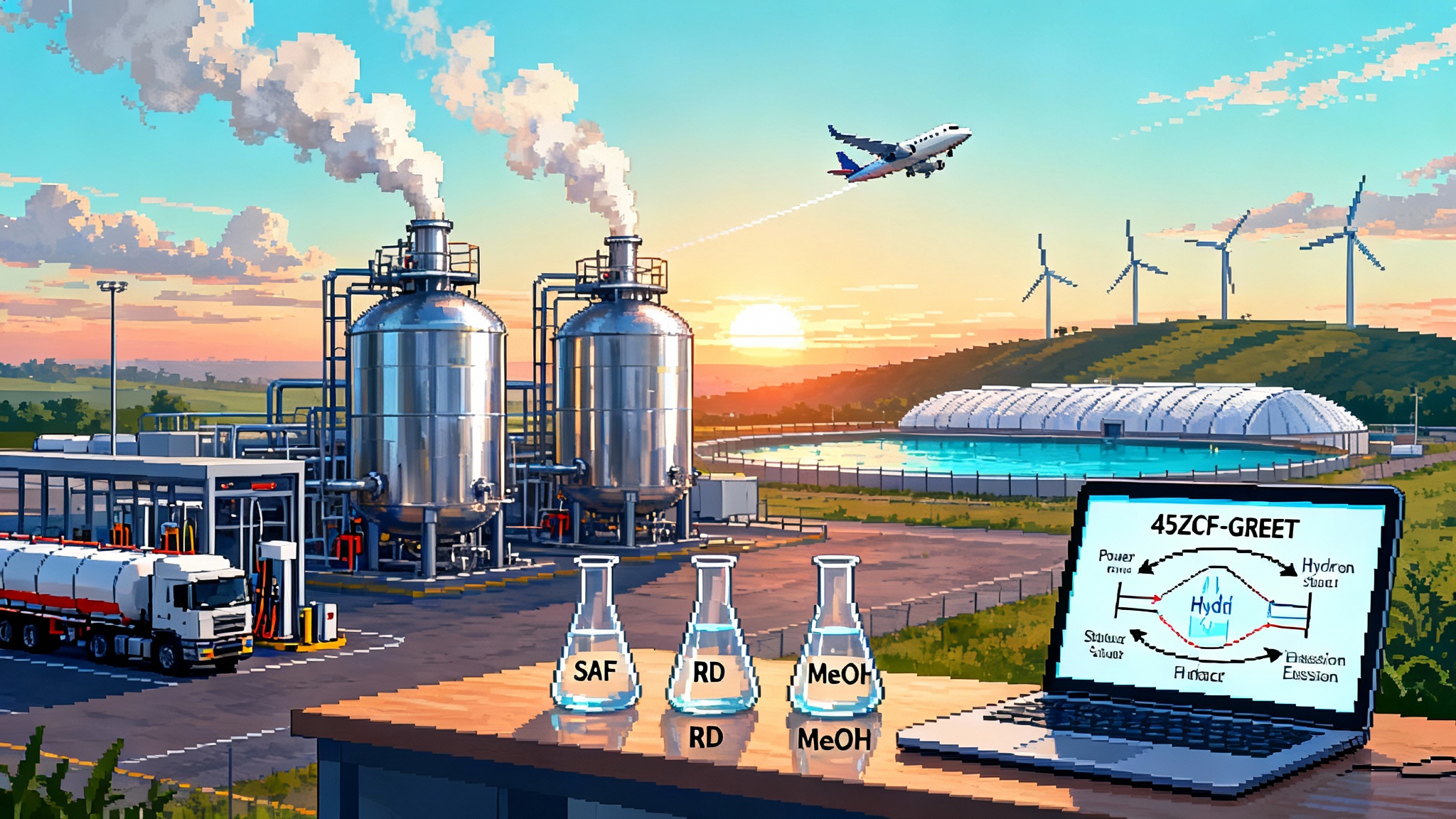SB 254 flips the switch on public grid finance in California
California just changed who pays to build long lines. SB 254 creates a state-run transmission accelerator, a revolving fund, and a wildfire reset that can cut carrying costs and unlock stalled CAISO projects.

Breaking: California just rewired who pays to build the grid
California’s grid just got a new balance sheet. With SB 254 now signed, the state has put public muscle behind high voltage lines while resetting the wildfire safety backstop that has spooked investors for years. The law is both a financial toolkit and a risk shock absorber. It creates a Transmission Infrastructure Accelerator inside the Governor’s Office of Business and Economic Development, launches a California Transmission Accelerator Revolving Fund at the state’s infrastructure bank, authorizes a state power financing authority to own and develop transmission, adds a targeted 20 percent tax credit for qualified transmission spending from 2026 through 2036, and refreshes the California Wildfire Fund with a new Continuation Account and a right of first refusal on certain insurance subrogation claims. If that sounds like a lot, it is. The details live in the chaptered SB 254 text.
The result is simple to say and hard to do well: the cost of building long lines can come down, schedules can compress, and the California Independent System Operator’s queue can move. That is why this bill lands with consequence far beyond Sacramento. It offers a template other states can adapt to make transmission more affordable and more bankable.
What changed and why it matters
For years, most new California transmission has been financed and owned by investor owned utilities. Their project revenue requirements include a regulated return on equity that reflects risk and reward. That return is fair in principle, but it also makes long assets expensive to carry for decades. SB 254 introduces a second lane: public debt and public ownership alongside private capital, with the state explicitly organizing, co financing, and in some cases owning the steel in the ground.
Here are the pivotal switches SB 254 flips:
-
Transmission Infrastructure Accelerator. This new team inside the state’s economic development office will coordinate siting, permitting, and financing across agencies, and curate which projects are positioned to receive public financing. Think of it as a project origination and de bottlenecking shop that speaks both bank and substation.
-
California Transmission Accelerator Revolving Fund at the state’s infrastructure bank. The California Infrastructure and Economic Development Bank, often called the I Bank, can lend directly, issue tax exempt or taxable bonds, and syndicate with other lenders for eligible transmission projects. It now has a dedicated revolving fund for transmission, so deals can recycle repayments into the next project instead of waiting for one off appropriations.
-
Public ownership authority. The California Consumer Power and Conservation Financing Authority, a state entity that has been dormant for years, is reactivated with permission to sponsor, finance, and own new transmission projects. That matters because public ownership unlocks lower cost debt and changes the economics of the entire asset.
-
A targeted transmission tax credit. From 2026 to 2036, qualified taxpayers can claim a 20 percent credit for eligible transmission expenditures, up to a cap per taxpayer per year. There is a tradeoff: the portion of a project that takes the credit cannot also earn a return on equity. That design nudges sponsors to replace expensive equity with cheaper debt on a slice of the project.
-
Wildfire Fund Continuation Account. To stabilize the risk climate, SB 254 creates a new source of liquidity for wildfire liabilities triggered after the law’s effective date. The Department of Water Resources may issue bonds to finance the account, and a nonbypassable customer charge is extended to 2045 to pay bond debt service. Utilities that opt in agree to updated cost recovery terms, including speedier reconciliation of disallowed costs.
-
Right of first refusal on large subrogation claims. If a property insurer seeks to sell certain wildfire subrogation claims after a major fire, the local utility gets the first chance to settle on the same terms. This curbs litigation arbitrage and helps keep loss costs predictable.
None of these ideas are abstract. They change the math and the timeline on real lines California needs to meet load growth, unlock renewable zones, and harden the grid against extreme weather. For context on demand drivers, see our analysis on how AI becomes the new baseload across U.S. power markets.
How state backed ownership lowers carrying costs
Transmission is capital. What ratepayers ultimately pay depends not only on how much steel and right of way are required, but also on the price of capital and how long it sits on the books. Two levers dominate the carrying cost:
- The weighted average cost of capital, which blends equity and debt costs
- The ability to defer or reduce equity returns by substituting lower cost public debt
Consider an illustrative example. A 1 billion dollar 500 kilovolt line financed in the traditional investor owned utility structure might use a simplified capital mix of 50 percent equity at a 10 percent regulated return and 50 percent debt at 6 percent interest. The pre tax carrying rate on capital is roughly 8 percent. If a public sponsor takes a material minority stake financed primarily with 4 to 5 percent tax exempt bonds, and the private sponsor forgoes equity returns on the portion that claims the tax credit, the blended carrying rate can drift toward the mid 4s to low 5s depending on structure. That is not a rounding error. Over a 40 year asset life, the savings cascade.
The new revolving fund also matters operationally. It allows the I Bank to underwrite projects with longer tenors, build tailored amortization schedules around construction and energization milestones, and manage refinancings when market conditions improve. Because the Accelerator Revolving Fund is designed to recycle repayments, early projects can seed later ones without constant trips back to the Legislature.
Finally, public ownership can reduce certain taxes embedded in private revenue requirements and allow access to construction techniques or procurement frameworks unavailable to sole source utility builds. None of this removes the need for strong oversight or prudent engineering. It simply uses the public balance sheet to lower the cost of what ratepayers already need to buy. For grid operations context, see our guide to Order 881 and advanced conductors.
Why the wildfire reset unlocks wires
Financing cost includes a risk premium. In California, wildfire liability risk has been the heaviest weight on that premium. The Continuation Account injects liquidity when it is needed most and clarifies how and when utilities reimburse the fund for costs deemed not just and reasonable. The right of first refusal on large subrogation claims dampens the volatility created by third party claim traders. The extended customer charge provides a stable repayment stream for any bonds.
Taken together, those elements aim for a smoother credit story. Smoother credit lowers spreads. Lower spreads cut carrying costs on every dollar of new utility debt and on any public bonds used by the I Bank or the Consumer Power Authority. The benefit spills over to customers whether or not a particular project uses the new public financing tools, but the combination is most powerful when used together.
A Q4 2025 through 2026 watchlist: where to look first
Two near term opportunities already sit in the California Independent System Operator’s competitive window. CAISO opened Phase 3 sponsor selection for specific projects approved in its 2024 to 2025 transmission plan. The detailed bid windows and contacts are posted on the CAISO Phase 3 competitive solicitation.
Here is a grounded watchlist that points to first movers:
-
Manning to Metcalf 500 kilovolt line. The Central Valley needs backbone capacity to move new solar, storage, and import flows toward load centers. The sponsor window ran through mid October 2025, which means teams that engaged early are positioned for selection in early 2026. Expect public sponsors to explore a minority stake financed through the Accelerator Revolving Fund to cut the equity slice and lean on the state credit.
-
Northern Receiving Station to San Jose B 230 kilovolt line. The Bay Area’s data center and electrification surge has stressed 230 kilovolt paths. Reconductoring is part of the story, but a new build between the Northern Receiving Station and San Jose B unlocks capacity exactly where demand is growing. Public co ownership here pairs naturally with the 20 percent tax credit, since a portion of planning and line equipment costs can qualify starting in 2026.
-
Bay Area reconductoring package. CAISO’s plan highlighted multiple reconductoring projects that use advanced conductors to add capacity without new rights of way. These are ideal for early public financing because they have shorter build cycles, lower environmental footprints, and clear ratepayer savings. Expect the Accelerator to prioritize a bundle where the I Bank can close quickly and recycle repayments.
-
North Coast offshore wind backbone steps. The 20 year outlook increased the expected offshore wind build in the North Coast and flagged a need for high voltage corridors into the Central Valley and Bay Area. Early work packages for substations and onshore corridors can be structured with public debt to reduce early stage carrying costs before full energization, when revenues are still years away.
-
Imperial Valley to Riverside corridor upgrades. Solar and cross border imports are squeezing existing 500 kilovolt paths. Incremental upgrades that add transfer capability without full line builds are public finance friendly and politically straightforward when they increase reliability for fast growing inland communities.
The common thread: these projects either already sit inside CAISO’s competitive process or fit the Accelerator’s stated criteria to reduce duplicative efforts, coordinate with CAISO planning, and pick projects that maximize ratepayer savings.
How developers can stack public funds with utility capital right now
This is the practical playbook for sponsors that want to use SB 254’s new tools without slowing down:
-
Form a public private team early. Identify a public transmission sponsor with experience building or operating transmission in California. Candidates include municipal utilities, irrigation districts, joint powers authorities, or the reactivated Consumer Power Authority. Have the public partner take a clear minority ownership stake, large enough to justify public bond financing but small enough to keep governance simple.
-
Map your funding stack. Build a capital plan that includes: I Bank debt sized to the public stake; private debt sized to the remainder; a targeted slice that will claim the 20 percent tax credit starting in 2026, with a corresponding reduction in allowed return on equity on that slice; and contingency capacity for later refinancing once the Continuation Account has improved spreads.
-
Engage the Transmission Infrastructure Accelerator. Ask for a coordination letter that confirms the project meets the Accelerator’s eligibility criteria and sequencing with CAISO’s Transmission Planning Process. The Accelerator’s mandate is to pick and advance projects that maximize savings. Help them make that case with a transparent revenue requirement model.
-
Pre clear structure with regulators. Align early with the California Public Utilities Commission on how the public stake will be reflected in the Certificate of Public Convenience and Necessity and in federal formula rates at the Federal Energy Regulatory Commission. The goal is clarity on how public bond debt will be serviced through transmission tariffs and how the tax credit will be accounted for in rates. For related federal context, see FERC’s 2025 IBR rules.
-
Bid into CAISO as a team. For competitive projects, enter as a joint team that explicitly includes the public sponsor and the I Bank financing plan. Show how the public slice lowers the bid’s net present cost to ratepayers and how it improves schedule certainty. Make sure the application hits CAISO’s key selection factors and uses the most recent sponsor application forms.
-
Time the tax credit. Because the credit applies from 2026 through 2036, sequence eligible planning, design, and equipment purchases to maximize credits without eroding necessary private equity returns. Use the credit on long lead items and engineering work that would otherwise accrue carrying costs early.
-
Lock delivery with supply chain deals. Public financing reduces capital cost, but it does not reserve transformers. Consider having the public sponsor or the Consumer Power Authority run umbrella procurements for transformers and conductor that aggregate demand across multiple Accelerator projects.
-
Translate wildfire risk into pricing. Work with your underwriters to quantify how the Continuation Account and right of first refusal reduce tail risks. Turn that into basis points. Bring those basis points back to the I Bank and the private lenders when you size debt and set coupons.
-
Write the community benefit plan to be shovel ready. SB 254 keeps strong community benefit and labor standards for eligible facilities. Use templates that align with the Energy Commission’s expectations so the certification process is smooth.
-
Build an exit and recycle plan. Because the Accelerator fund is revolving, propose milestones that trigger partial prepayments. If spreads tighten after energization, plan for a refinancing that returns cheap capital to the fund for the next project.
What other states can copy without the California baggage
SB 254 is not a one off. It is a recipe that any state can adapt, especially those inside or adjacent to regional markets where long lines unlock low cost generation. The replicable elements are:
- A transmission accelerator in the state’s economic development office to coordinate agencies and push projects across the line of scrimmage.
- A revolving fund at a state infrastructure bank that can issue tax exempt bonds, lend directly, and syndicate. The key is to make transmission an eligible project with public interest findings baked into statute.
- A state entity that can own and operate wires, even as a minority partner, so public capital has a clear legal home.
- A targeted, time limited tax credit that swaps out equity returns on a portion of project costs. Small, well aimed credits change capital structure behavior without distorting technology choices.
- A catastrophe fund or insurance mechanism that smooths systemic risks which otherwise inflate spreads across all grid investments.
These elements do not preempt federal oversight. They coexist with regional planning and Federal Energy Regulatory Commission jurisdiction. The point is to bring down cost and risk without slowing the work.
Open questions to watch through 2026
- How quickly will the I Bank publish detailed program guidelines for the Accelerator Revolving Fund, including underwriting criteria and any limits on taxable versus tax exempt bonds for projects with mixed ownership?
- How will the Consumer Power Authority staff up to sponsor and own projects, and will it pursue early umbrella procurements for long lead equipment?
- How will the tax credit be administered in practice by the Franchise Tax Board, and how will sponsors account for the no equity return clause on the credited portion in federal rate filings?
- Will the Continuation Account’s extended customer charge and bonding reduce utilities’ overall debt costs within 12 to 18 months, and will rating agencies credit the right of first refusal on subrogation as a stabilizing feature?
- Can the Transmission Infrastructure Accelerator align selection timing with CAISO’s Phase 3 competitive calendar so public financing commitments and sponsor awards move in lockstep?
The bottom line
California just turned transmission from a single lane owned and financed by private balance sheets into a two lane road where the public can take the slow, heavy load at a lower toll. SB 254 does not remove the need for careful engineering, strong wildfire prevention, or transparent rate oversight. It does something more practical. It lowers the price of time. For CAISO lines waiting on economics and risk clarity, that can be the difference between a plan and a build. If states want a model, they now have one. If developers want to move, the playbook is on the table and the clock is already running.
